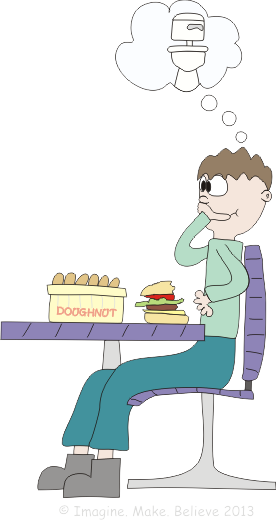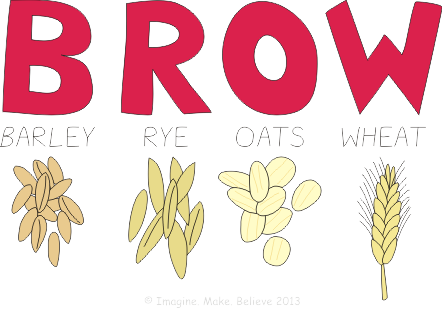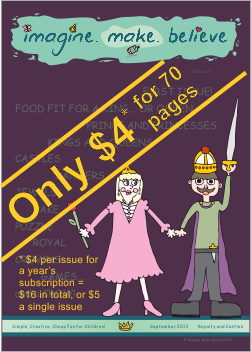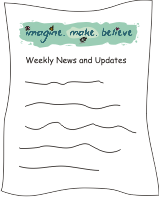Who would have thought!? Janelle certainly had never dreamt or guessed that she would have two children with coeliac disease. She had only heard of it a couple of times in her life, and didn’t even know what it was. She thought she was blessed with four healthy children (which she is!), but she didn’t know something had been lurking, ready to be discovered one day, in 2010.
So what IS coeliac disease?
Coeliac disease is an autoimmune disorder, so that when gluten is consumed, it causes damage to the small bowel which then becomes less effective at absorbing nutrients, often resulting in malnutrition and serious health issues if left untreated. You can’t ‘catch it’ from anyone. Coeliac disease affects approximately 1 in 100 people in Australia and the United Kingdom. In the USA, it is about 1 in 133. About 3/4 of the people that have coeliac disease, are not yet diagnosed, which leaves millions of people untreated for something they don’t realise they have.
How did you find out that the children had coeliac disease?
It all started with concerns about Elissa’s height. She is short for her age. Unusually short. At this stage, she is a tiny bit taller than her sister who is 20 months younger than her. They generally wear the same size clothes. Elissa was not born short, but at six months of age there was a significant drop in her height. Janelle talked on and off to doctors and health nurses for six years about it. No-one was too worried. She was happy, seemingly healthy, ate well, and it would seem that the answers Janelle gave to the questions they asked, indicated to them that there was not anything obviously wrong. So nothing was done. It niggled at Janelle for those six years, until in 2010, she took her to a really great doctor that she hadn’t seen before. The doctor ran a series of tests, and that is when we discovered that Elissa most likely had coeliac disease.
Coeliac disease runs in families, so it was recommended that all our family members have a blood test, as a simple blood test is it all it takes to find out whether you are likely or unlikely to have it. That is how our we discovered that JJ also probably had coeliac disease. Coeliac disease, at this stage, can only be confirmed by a biopsy of the small bowel, so we took JJ and Elissa to the hospital in the big city to get that done. They both came back with positive results for coeliac disease.
What were the symptoms?
Symptoms for coeliac disease are so wide and varied and as a result, many people remain undiagnosed. Often undiagnosed coeliac children do poorly at school, are tired and irritable, are of short stature, have diarrhoea, regularly have a sore tummy or have other symptoms. In adults, symptoms are similar, although coeliac disease can also cause osteoporosis, infertility, depression and a range of other health problems. Elissa’s symptoms were short stature, constipation and a complaint of a sore tummy once in a blue moon. She was doing very well at school though, and happy! The interesting thing is that JJ didn’t have any obvious symptoms. We did think after we found out, that that might explain why his growth had slowed down and he wasn’t changing clothes sizes as regularly as his brother. He was also doing brilliantly at school… topping his year at school every year. Mind you, an extended family member had thought over the years that JJ and Elissa didn’t quite look well, and that something wasn’t quite right. Because our children didn’t have any really obvious symptoms, we feel so very fortunate to have had the children diagnosed with coeliac disease when they were so young (6 and 8), so that the long term potential damage of untreated coeliac disease would never come into effect.
How do you treat coeliac disease?
Coeliac disease is a life long disease that currently can not be cured. There is a vaccine currently being trialled and tested for the treatment of coeliac disease, but it is only in early stages at the moment. The way to treat coeliac disease is to totally avoid eating gluten, for the rest of your life. If you think that is drastic, just remember it is cheap healthy medicine with no body damaging side effects and it is far better than dealing with cancer, or most other diseases.
What is gluten?
Gluten is a protein that is found in the grain of wheat, barley, rye and oats, so most bread, pasta, cereal, cakes and biscuits contain gluten.
What CAN coeliacs eat then?
Most natural food is gluten free. Meat, vegetables, fruit, eggs, nuts, seeds, and milk are all gluten free. Once something is processed it has the risk of containing gluten, and you will have to check the food label to see what the ingredients are, or whether it may have been contaminated by gluten. Corn and rice are also gluten free, and are two of the main ingredients used as a replacement for wheat and other gluten grains in gluten free bread, pasta, cereal and other foods. So we make or buy special gluten free bread, cereal, cakes, biscuits, muesli bars, noodles, lollies and so on.
What did you do when you found out the children had coeliac disease?
During the time between having the blood tests and the hospital visit, we talked a lot about food and coeliac disease. We looked at what food contained gluten, and what didn’t, so we knew that the children would be able to eat ‘this’, but not ‘that’ if they came back with a positive coeliac result. We also ate lots of gluten before the hospital visit, especially things that were a treat for the children that we knew they would never be able to eat on a gluten free diet.
Once we found out the children had coeliac disease, we started them on a gluten free diet straight away. We had to start reading every food ingredient label to work out what was gluten free and what wasn’t. We had a big sort out in the pantry, fridge and freezer and green spot stickers went on everything that was gluten free. Then we went shopping for all the basics – cereal, bread, etc, for the gluten free children. During the first few weeks we did a lot more talking and learning about food, labels, food at school, parties and so on.
We also encouraged the coeliac children to be open about trying new foods… it was going to be an adventure! We also talked about ‘winning’ and ‘losing’. Yes… that’s right! Sometimes things weren’t going to be fair. Sometimes, the coeliac children were going to get food that may be better (yummier) than what the gluten kids get, and vice verca. And so sometimes you ‘win’ and sometimes you ‘lose’ but that it would all pan out in the end.
We created an acronym – BROW (barley, rye, oats, wheat) so that the children could easily remember what grains contain gluten, making it is easy for them to know what ingredients to avoid. We also taught them how to read a food label, and the less obvious things they need to look for. We talked about the consequences of eating gluten and its long term damaging effects, and food contamination and how to avoid that, so they don’t end up sick.
What’s this about food contamination?
The coeliac children do not live in a gluten free household, because there are four others of us that are able to eat gluten. It is not a healthy option to remove gluten from the diet of those who do not need to be gluten free, and besides it would make a very expensive shopping trip every week. So that means we have to be very careful with contamination from bread crumbs, flour, pasta, and other foods that have gluten in them. Even a tiny speck of gluten the size of a bread crumb can do internal damage in those with coeliac disease, so we treat gluten a bit like poison. If you had poison in a bottle, you would be very careful not to use the poison around food and you would avoid putting your knife in the poison bottle and then into the honey jar, and then onto your bread. It would be unthinkable, and so it is with gluten in our house. There is a tendency out there to think that if you don’t have obvious physical symptoms when you have eaten gluten (and are coeliac), then you don’t have to be so careful, and that you are not so sensitive to contamination from gluten. Well, that is not the case. Our children are great examples of that, having no or few symptoms, but the damage was being done.
As a result, we have two lots of peanut butter, margarine, honey, etc. We have put a green spot on all the gluten free food to make it easy for all of us and visitors to know what is gluten free, and so that we make sure we don’t contaminate anything in a green spotted container. We have toaster bags to cook toast in the toaster so that we don’t have to have two toasters or worry about contamination from the breadcrumbs that are inevitably in the toaster. We make sure that everything is thoroughly clean before we use it for gluten free purposes.
It also means, that when the coeliac children are at parties or shared morning teas and so on, they generally take along their own stash of food. They generally can’t have shared food, even if it is gluten free, because someone else may have inadvertently put their gluten covered fingers from the cake they were just eating, in the gluten free chip bowl. It looks a little isolating and sometimes even a little selfish, but they can’t risk it.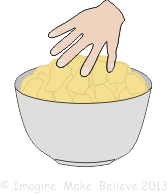
What now?
It has changed our life, the way we cook, eat, live! The coeliac children eat their special gluten free cereal for breakfast and they have their special bread or rice/corn thins for lunch. For the main meal in the evening, we usually cook something that is gluten free, because that is generally easy to do because meat and vegetables are naturally gluten free. If we cook pasta, we usually cook normal wheat pasta, and a batch of gluten free pasta, and then use a gluten free meat sauce to serve with the different pasta.
I’m wondering if I have coeliac disease… what should I do?
If you suspect that you might have coeliac disease, go talk to your doctor and ask for a simple blood test to find out. You will need to keep eating gluten, and eat plenty leading up to the test, so that you get an accurate result. Don’t go and trial a gluten free diet. It is better to rule out (or in) coeliac disease first, and if you do have coeliac disease, it is so much easier to stick to a totally gluten free diet if you have a proper diagnosis. Another reason to find out if you do or don’t have coeliac disease is to rule out other health problems that are not coeliac disease. You may have something else going on that is causing you to feel unwell. It is also important to have a proper diagnosis, because if you have coeliac disease, then all your family members should get tested (coeliac disease runs in families), and you may require other health tests including a bone density scan.
If you suspect that your child might have coeliac disease and you don’t want to put your child through the painful process of a blood test (which is very short lived), just remember that they may already be suffering pain from the affects of gluten, and if you don’t get them tested they may live with that for a long time. If they are not showing awful physical symptoms, it’s still doing internal damage, and if left untreated, they can end up being very unwell adults. Don’t forget to trust your instincts either and if your doctor won’t give you or your child a blood test, then find another one who will! If Janelle hadn’t persisted with her niggly feelings, Elissa and JJ would have remained undiagnosed for years.
What else?
It can be really overwhelming and challenging to change the way you eat, cook and shop, but after about six weeks, it will become much easier and normal, so hang in there! If you or a family member have been diagnosed with coeliac disease, or need to cook for gluten free people, have a look at all our helpful hints. These will hopefully help you get started if you are new to it all. We also have some gluten free recipes on our Recipe page that you might like to try. You can also find recipes in each one of our Imagine. Make. Believe magazines that are themed and great for parties, and are easily adaptable to different dietary requirements. We wish you well on your own food and life journey, and hope we have you helped you in some way.





